RBS 2011 Annual Report Download - page 356
Download and view the complete annual report
Please find page 356 of the 2011 RBS annual report below. You can navigate through the pages in the report by either clicking on the pages listed below, or by using the keyword search tool below to find specific information within the annual report.-
 1
1 -
 2
2 -
 3
3 -
 4
4 -
 5
5 -
 6
6 -
 7
7 -
 8
8 -
 9
9 -
 10
10 -
 11
11 -
 12
12 -
 13
13 -
 14
14 -
 15
15 -
 16
16 -
 17
17 -
 18
18 -
 19
19 -
 20
20 -
 21
21 -
 22
22 -
 23
23 -
 24
24 -
 25
25 -
 26
26 -
 27
27 -
 28
28 -
 29
29 -
 30
30 -
 31
31 -
 32
32 -
 33
33 -
 34
34 -
 35
35 -
 36
36 -
 37
37 -
 38
38 -
 39
39 -
 40
40 -
 41
41 -
 42
42 -
 43
43 -
 44
44 -
 45
45 -
 46
46 -
 47
47 -
 48
48 -
 49
49 -
 50
50 -
 51
51 -
 52
52 -
 53
53 -
 54
54 -
 55
55 -
 56
56 -
 57
57 -
 58
58 -
 59
59 -
 60
60 -
 61
61 -
 62
62 -
 63
63 -
 64
64 -
 65
65 -
 66
66 -
 67
67 -
 68
68 -
 69
69 -
 70
70 -
 71
71 -
 72
72 -
 73
73 -
 74
74 -
 75
75 -
 76
76 -
 77
77 -
 78
78 -
 79
79 -
 80
80 -
 81
81 -
 82
82 -
 83
83 -
 84
84 -
 85
85 -
 86
86 -
 87
87 -
 88
88 -
 89
89 -
 90
90 -
 91
91 -
 92
92 -
 93
93 -
 94
94 -
 95
95 -
 96
96 -
 97
97 -
 98
98 -
 99
99 -
 100
100 -
 101
101 -
 102
102 -
 103
103 -
 104
104 -
 105
105 -
 106
106 -
 107
107 -
 108
108 -
 109
109 -
 110
110 -
 111
111 -
 112
112 -
 113
113 -
 114
114 -
 115
115 -
 116
116 -
 117
117 -
 118
118 -
 119
119 -
 120
120 -
 121
121 -
 122
122 -
 123
123 -
 124
124 -
 125
125 -
 126
126 -
 127
127 -
 128
128 -
 129
129 -
 130
130 -
 131
131 -
 132
132 -
 133
133 -
 134
134 -
 135
135 -
 136
136 -
 137
137 -
 138
138 -
 139
139 -
 140
140 -
 141
141 -
 142
142 -
 143
143 -
 144
144 -
 145
145 -
 146
146 -
 147
147 -
 148
148 -
 149
149 -
 150
150 -
 151
151 -
 152
152 -
 153
153 -
 154
154 -
 155
155 -
 156
156 -
 157
157 -
 158
158 -
 159
159 -
 160
160 -
 161
161 -
 162
162 -
 163
163 -
 164
164 -
 165
165 -
 166
166 -
 167
167 -
 168
168 -
 169
169 -
 170
170 -
 171
171 -
 172
172 -
 173
173 -
 174
174 -
 175
175 -
 176
176 -
 177
177 -
 178
178 -
 179
179 -
 180
180 -
 181
181 -
 182
182 -
 183
183 -
 184
184 -
 185
185 -
 186
186 -
 187
187 -
 188
188 -
 189
189 -
 190
190 -
 191
191 -
 192
192 -
 193
193 -
 194
194 -
 195
195 -
 196
196 -
 197
197 -
 198
198 -
 199
199 -
 200
200 -
 201
201 -
 202
202 -
 203
203 -
 204
204 -
 205
205 -
 206
206 -
 207
207 -
 208
208 -
 209
209 -
 210
210 -
 211
211 -
 212
212 -
 213
213 -
 214
214 -
 215
215 -
 216
216 -
 217
217 -
 218
218 -
 219
219 -
 220
220 -
 221
221 -
 222
222 -
 223
223 -
 224
224 -
 225
225 -
 226
226 -
 227
227 -
 228
228 -
 229
229 -
 230
230 -
 231
231 -
 232
232 -
 233
233 -
 234
234 -
 235
235 -
 236
236 -
 237
237 -
 238
238 -
 239
239 -
 240
240 -
 241
241 -
 242
242 -
 243
243 -
 244
244 -
 245
245 -
 246
246 -
 247
247 -
 248
248 -
 249
249 -
 250
250 -
 251
251 -
 252
252 -
 253
253 -
 254
254 -
 255
255 -
 256
256 -
 257
257 -
 258
258 -
 259
259 -
 260
260 -
 261
261 -
 262
262 -
 263
263 -
 264
264 -
 265
265 -
 266
266 -
 267
267 -
 268
268 -
 269
269 -
 270
270 -
 271
271 -
 272
272 -
 273
273 -
 274
274 -
 275
275 -
 276
276 -
 277
277 -
 278
278 -
 279
279 -
 280
280 -
 281
281 -
 282
282 -
 283
283 -
 284
284 -
 285
285 -
 286
286 -
 287
287 -
 288
288 -
 289
289 -
 290
290 -
 291
291 -
 292
292 -
 293
293 -
 294
294 -
 295
295 -
 296
296 -
 297
297 -
 298
298 -
 299
299 -
 300
300 -
 301
301 -
 302
302 -
 303
303 -
 304
304 -
 305
305 -
 306
306 -
 307
307 -
 308
308 -
 309
309 -
 310
310 -
 311
311 -
 312
312 -
 313
313 -
 314
314 -
 315
315 -
 316
316 -
 317
317 -
 318
318 -
 319
319 -
 320
320 -
 321
321 -
 322
322 -
 323
323 -
 324
324 -
 325
325 -
 326
326 -
 327
327 -
 328
328 -
 329
329 -
 330
330 -
 331
331 -
 332
332 -
 333
333 -
 334
334 -
 335
335 -
 336
336 -
 337
337 -
 338
338 -
 339
339 -
 340
340 -
 341
341 -
 342
342 -
 343
343 -
 344
344 -
 345
345 -
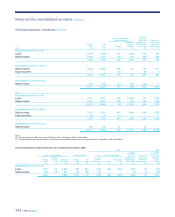 346
346 -
 347
347 -
 348
348 -
 349
349 -
 350
350 -
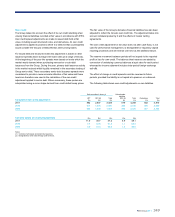 351
351 -
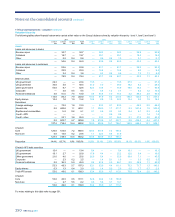 352
352 -
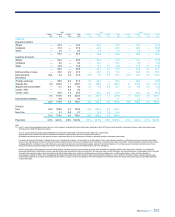 353
353 -
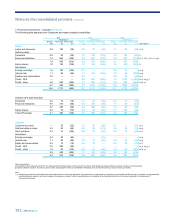 354
354 -
 355
355 -
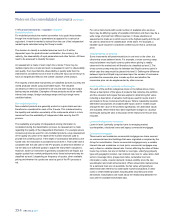 356
356 -
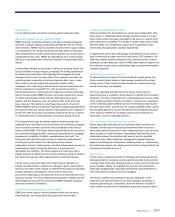 357
357 -
 358
358 -
 359
359 -
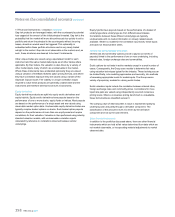 360
360 -
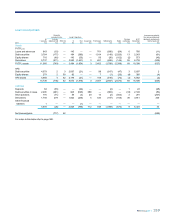 361
361 -
 362
362 -
 363
363 -
 364
364 -
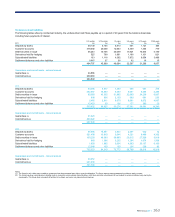 365
365 -
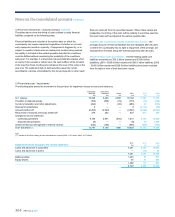 366
366 -
 367
367 -
 368
368 -
 369
369 -
 370
370 -
 371
371 -
 372
372 -
 373
373 -
 374
374 -
 375
375 -
 376
376 -
 377
377 -
 378
378 -
 379
379 -
 380
380 -
 381
381 -
 382
382 -
 383
383 -
 384
384 -
 385
385 -
 386
386 -
 387
387 -
 388
388 -
 389
389 -
 390
390 -
 391
391 -
 392
392 -
 393
393 -
 394
394 -
 395
395 -
 396
396 -
 397
397 -
 398
398 -
 399
399 -
 400
400 -
 401
401 -
 402
402 -
 403
403 -
 404
404 -
 405
405 -
 406
406 -
 407
407 -
 408
408 -
 409
409 -
 410
410 -
 411
411 -
 412
412 -
 413
413 -
 414
414 -
 415
415 -
 416
416 -
 417
417 -
 418
418 -
 419
419 -
 420
420 -
 421
421 -
 422
422 -
 423
423 -
 424
424 -
 425
425 -
 426
426 -
 427
427 -
 428
428 -
 429
429 -
 430
430 -
 431
431 -
 432
432 -
 433
433 -
 434
434 -
 435
435 -
 436
436 -
 437
437 -
 438
438 -
 439
439 -
 440
440 -
 441
441 -
 442
442 -
 443
443 -
 444
444 -
 445
445 -
 446
446 -
 447
447 -
 448
448 -
 449
449 -
 450
450 -
 451
451 -
 452
452 -
 453
453 -
 454
454 -
 455
455 -
 456
456 -
 457
457 -
 458
458 -
 459
459 -
 460
460 -
 461
461 -
 462
462 -
 463
463 -
 464
464 -
 465
465 -
 466
466 -
 467
467 -
 468
468 -
 469
469 -
 470
470 -
 471
471 -
 472
472 -
 473
473 -
 474
474 -
 475
475 -
 476
476 -
 477
477 -
 478
478 -
 479
479 -
 480
480 -
 481
481 -
 482
482 -
 483
483 -
 484
484 -
 485
485 -
 486
486 -
 487
487 -
 488
488 -
 489
489 -
 490
490
 |
 |

354 RBS Group 2011
11 Financial instruments - valuation continued
Modelled products
For modelled products the market convention is to quote these trades
through the model inputs or parameters as opposed to a cash price
equivalent. A mark-to-market is derived from the use of the independent
market inputs calculated using the Group’s model.
The decision to classify a modelled asset as level 2 or 3 will be
dependent upon the product/model combination, the currency, the
maturity, the observability of input parameters and other factors. All these
need to be assessed to classify the asset.
An assessment is made of each input into a model. There may be
multiple inputs into a model and each is assessed in turn for observability
and quality. If an input fails the observability or quality tests then the
instrument is considered to be in level 3 unless the input can be shown to
have an insignificant effect on the overall valuation of the product.
The majority of derivative instruments are classified as level 2 as they are
vanilla products valued using observable inputs. The valuation
uncertainty on these is considered to be low and both input and output
testing may be available. Examples of these products would be vanilla
interest rate swaps, foreign exchange swaps and liquid single name
credit derivatives.
Non-modelled products
Non-modelled products are generally quoted on a price basis and can
therefore be considered for each of the 3 levels. This is determined by
the liquidity and valuation uncertainty of the instruments which is in turn
measured from the availability of independent data used by the IPV
process.
The availability and quality of independent pricing information is
considered during the classification process. An assessment is made
regarding the quality of the independent information. For example where
consensus prices are used for non-modelled products, a key assessment
of the quality of a price is the depth of the number of prices used to
provide the consensus price. If the depth of contributors falls below a set
hurdle rate, the instrument is considered to be level 3. This hurdle rate is
consistent with the rate used in the IPV process to determine whether or
not the data is of sufficient quality to adjust the instrument’s valuations.
However, where an instrument is generally considered to be illiquid, but
regular quotes from market participants exist, these instruments may be
classified as level 2 depending on frequency of quotes, other available
pricing and whether the quotes are used as part of the IPV process or
not.
For some instruments with a wide number of available price sources,
there may be differing quality of available information and there may be a
wide range of prices from different sources. In these situations an
assessment is made as to which source is the highest quality and this will
be used to determine the classification of the asset. For example, a
tradable quote would be considered a better source than a consensus
price.
Instruments that cross levels
Some instruments will predominantly be in one level or the other, but
others may cross between levels. For example, a cross currency swap
may be between very liquid currency pairs where pricing is readily
observed in the market and will therefore be classified as level 2. The
cross currency swap may also be between two illiquid currency pairs in
which case the swap would be placed into level 3. Defining the difference
between liquid and illiquid may be based upon the number of consensus
providers the consensus price is made up from and whether the
consensus price can be supplemented by other sources.
Level 3 portfolios and sensitivity methodologies
For each of the portfolio categories shown in the tables above, there
follows a description of the types of products that comprise the portfolio
and the valuation techniques that are applied in determining fair value,
including a description of valuation techniques used for levels 2 and 3
and inputs to those models and techniques. Where reasonably possible
alternative assumptions of unobservable inputs used in models would
change the fair value of the portfolio significantly, the alternative inputs
are indicated. Where there have been significant changes to valuation
techniques during the year a discussion of the reasons for this are also
included.
Loans and advances to customers
Loans in level 3 primarily comprise loans to emerging market
counterparties, structured loans and legacy commercial mortgages.
Commercial mortgages
These senior and mezzanine commercial mortgages are loans secured
on commercial land and buildings that were originated or acquired by the
Group for securitisation. Senior commercial mortgages carry a variable
interest rate and mezzanine or more junior commercial mortgages may
carry a fixed or variable interest rate. Factors affecting the value of these
loans may include, but are not limited to, loan type, underlying property
type and geographic location, loan interest rate, loan to value ratios, debt
service coverage ratios, prepayment rates, cumulative loan loss
information, yields, investor demand, market volatility since the last
securitisation andcredit enhancement. Where observable market prices
for a particular loan are not available, the fair value will typically be
determined with reference to observable market transactions in other
loans or credit related products including debt securities and credit
derivatives. Assumptions are made about the relationship between the
loan and the available benchmark data.
Notes on the consolidated accounts continued
